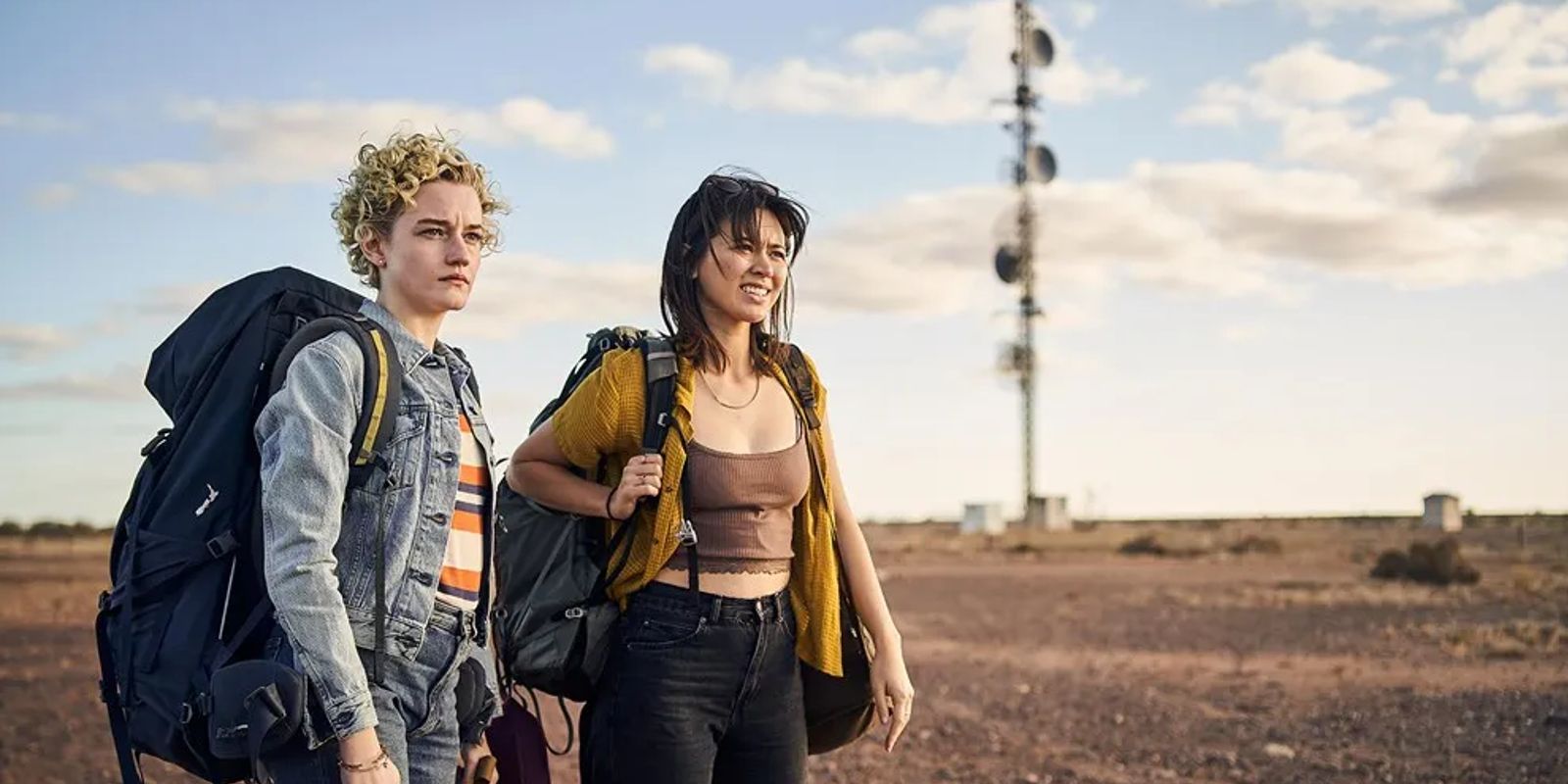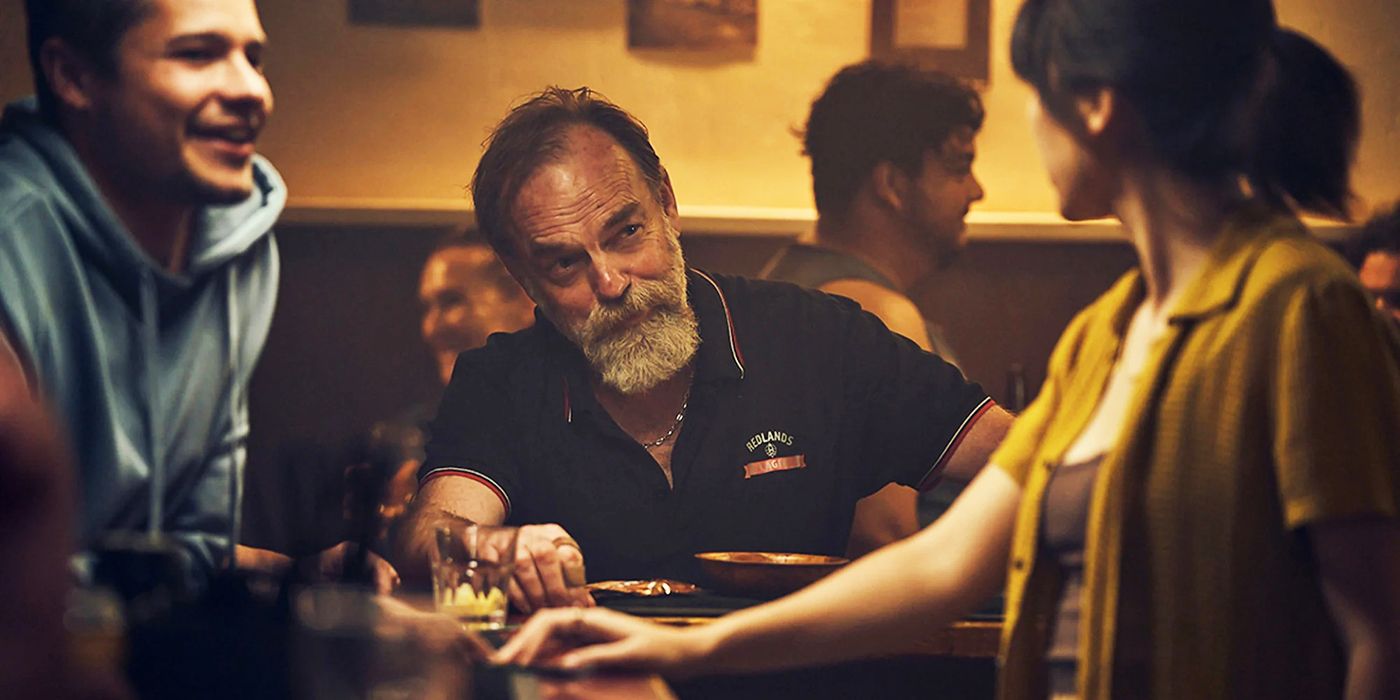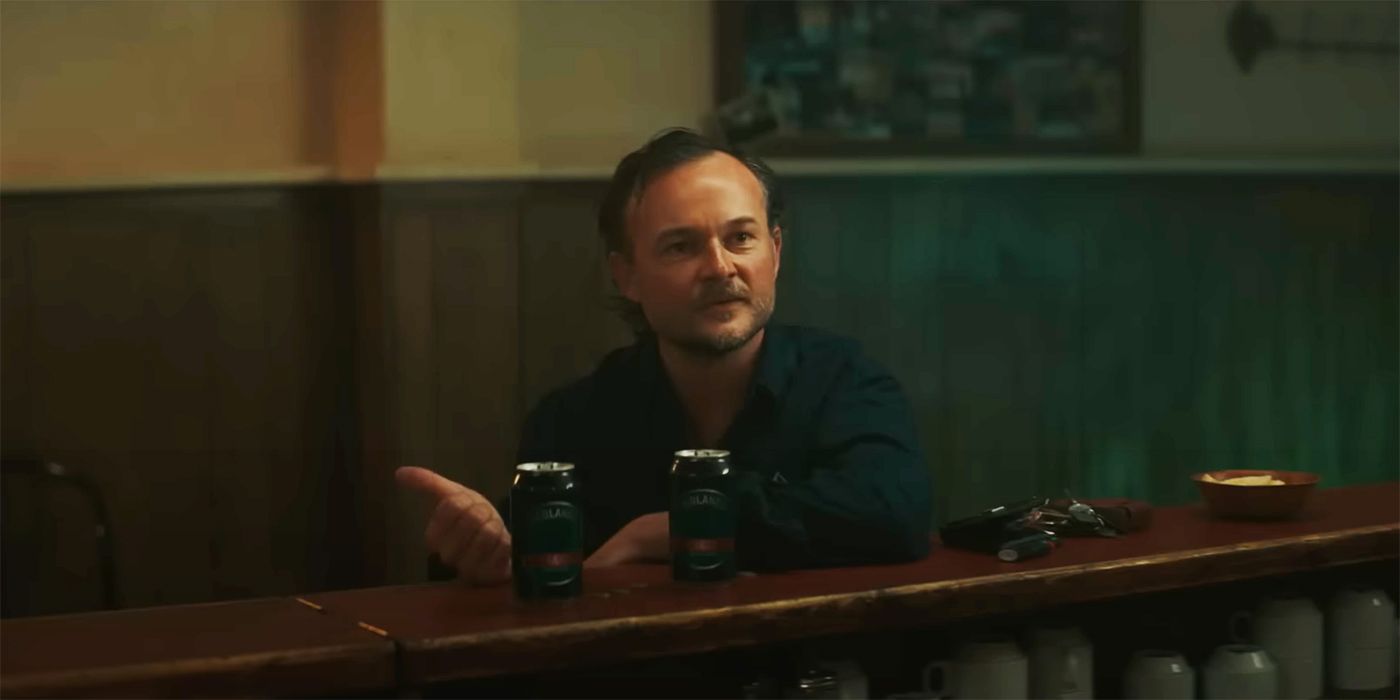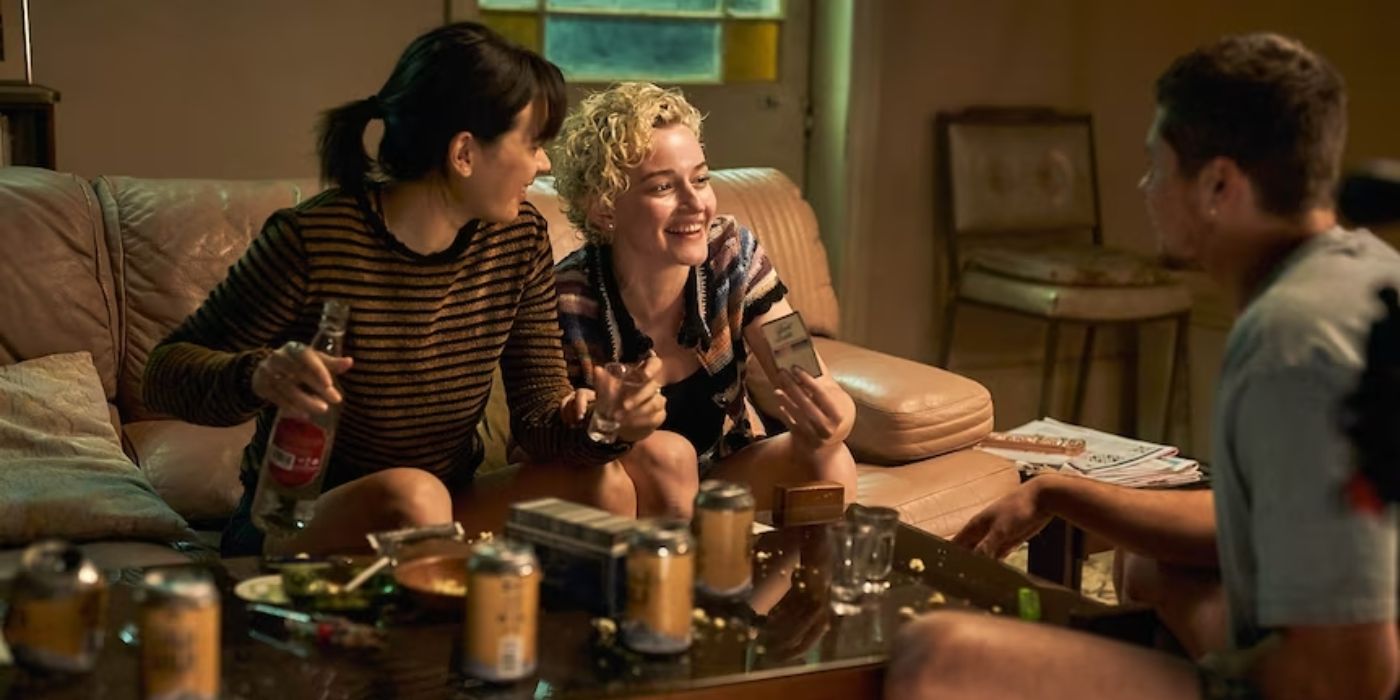Summary
- The Royal Hotel movie captures the essence of women facing abuse, harassment, and misogyny in a remote Australian bar.
- The film deviates from the real story to heighten tension, portraying Coolgardie as a deserted and dated town for more impact.
- By burning down the hotel, the movie symbolizes the need to eradicate misogyny, abuse, and harassment, sending a strong message.
Kitty Green’s latest film, The Royal Hotel, is inspired by the terrifying ordeal of two Finnish backpackers. However, it takes some creative liberties in detailing the harrowing experiences of these young women. The Royal Hotel stars Julia Garner and Jessica Henwick as Hanna and Liv, and follows the protagonists as they find themselves working in a remote Australian bar after running out of money during their backpacking trip. The establishment is frequented by misogynistic and dissatisfied men, mostly miners from nearby, who subject the two women to possessive behavior, harassment, and abuse.
The Royal Hotel draws its inspiration from the 2016 documentary Hotel Coolgardie, which chronicles the real-life story of Lina and Steph, two Finnish backpackers who faced inhumane treatment while working as bartenders in Coolgardie, Australia. Although the film takes some artistic liberties, it effectively highlights the pervasive issue of harassment in the workplace and serves as a poignant #MeToo project. As Hanna and Liv navigate the threatening advances and struggle to stay safe in an unfamiliar environment, the film sheds light on the challenges faced by women in such situations.
7 Hanna And Liv’s Financial Situation
Steph and Lina’s credit cards were stolen
The 2023 film The Royal Hotel deviates from the true story depicted in the documentary Hotel Coolgardie by altering the circumstances surrounding the Finnish girls’ financial situation. While the real-life events involved Stephie and Lina’s credit cards being stolen in Bali, resulting in the depletion of their travel savings and forcing them to work in Perth, the film opts for a simpler narrative device. In the movie, Hanna and Liv’s credit card mysteriously stops working, providing no explanation for the cause of their financial predicament, which ultimately leads them to seek employment at the hotel.
6 How Hanna And Liv End Up At The Hotel
A work agent in Perth connected the girls to the job
The events leading up to the girls’ arrival at the hotel, compared to the true story featured in the documentary, didn’t quite happen the same way. In reality, the girls met a work agent who offered them a three-month contract in Coolgardie, preventing them from leaving until the agreement ended. The film omits these details, instead bringing the girls directly to the mining town, where they are warned about unwanted male attention. The documentary reveals the hotel’s caretaker as a sexist man who specifically requested young female employees from job agencies, exploiting innocent travelers without concern for their safety.
5 Who Actually Met The Girls At The Train Station
The hotel manager picked up the girls
While the Hotel Coolgardie reveals that Peter, the hotel manager, personally picked up Steph and Lina from the railway station, the movie alters this detail. Instead, the film depicts Carol, the kitchen cook, as the one who meets the girls at the station and escorts them to the hotel. By giving Carol this task, the film sets up a false sense of security. As the story unfolds, Carol’s early appearance at the train station adds to the sense of betrayal and isolation the girls experience in the hostile environment of the hotel.
4 The Town Of Coolgardie Isn’t Deserted
The change in setting increases the film’s tension
The Royal Hotel takes creative liberties with the portrayal of Coolgardie, depicting it as a deserted town in contrast to the documentary’s representation. In reality, Coolgardie is not as isolated or empty as the movie suggests. This alteration in the film’s ambiance may have been a deliberate choice to heighten the sense of danger and raise the stakes for the girls. By making the town appear more desolate, The Royal Hotel emphasizes the girls’ vulnerability and the lack of escape options if they were to face any threats or harm. This creative decision effectively amplifies the tension and conflict within the story.

25 Best Netflix Movies Based On True Stories
There are thousands of movies to choose from on Netflix, but if you are in the mood for a true story, these are the best of them all.
3 The Real Life Bar Is Pretty Modern
A more dated aesthetic is portrayed in the film
The depiction of the bar and its patrons slightly diverges from the reality presented in the documentary. In The Royal Hotel, the bar appears more dated and the miners are often shown wearing uniforms, contributing to a sense of disconnect from modern times. However, the documentary reveals a different picture, showcasing a more contemporary bar setting and people dressed in casual, modern attire. By presenting a more old-fashioned and uniform-clad environment, the movie may aim to emphasize the town’s isolation and the characters’ sense of being trapped in a different era.
2 The Previous Bartenders Enjoyed Working At The Hotel
The previous employees stayed at the hotel much longer than implied
The impression given in The Royal Hotel is that the former employees were eager to leave the hotel and continue their travels as soon as they had saved enough money. However, the documentary reveals a different reality. It shows that Becky and Clio, the real former bartenders, actually enjoyed the company of the miners and stayed in Coolgardie for an extended period, longer than what is depicted in the film.
The omission of the previous bartenders’ positive experiences also serves to heighten the isolation and vulnerability of the incoming characters.
This discrepancy suggests that the movie chose to downplay the bartenders’ positive experiences and connections with the miners, possibly to maintain a more consistent tone of unease and tension throughout the story. By minimizing the previous bartenders’ enjoyment of their time at the hotel, the film maintains a sense of foreboding and emphasizes the challenges the new arrivals will face. The omission of the previous bartenders’ positive experiences also serves to heighten the vulnerability of the incoming characters, as they are left without a clear example of how to navigate the complex social dynamics of the hotel.
1 The Real Hotel Is Still Around
The Denver City Hotel was not burned down
At the ending of The Royal Hotel, the titular establishment meets a fiery end, symbolically destroyed by Liv and Hanna as an act of retribution against the misogyny and abuse they endured. This powerful narrative choice represents the oppressed rising up against their oppressors and dismantling the structures that perpetuate harm. However, the real-life Denver City Hotel still stands, under new management and no longer exploiting vulnerable travelers.
The film’s decision to burn down the hotel serves as a metaphor for the need to eradicate misogyny, sexual harassment, and abuse worldwide, even if the physical structure remains. By deviating from the true story’s outcome, the movie sends a strong message about the importance of confronting and destroying these pervasive issues. This choice adds emphasis that there is no place where such behavior is acceptable.













